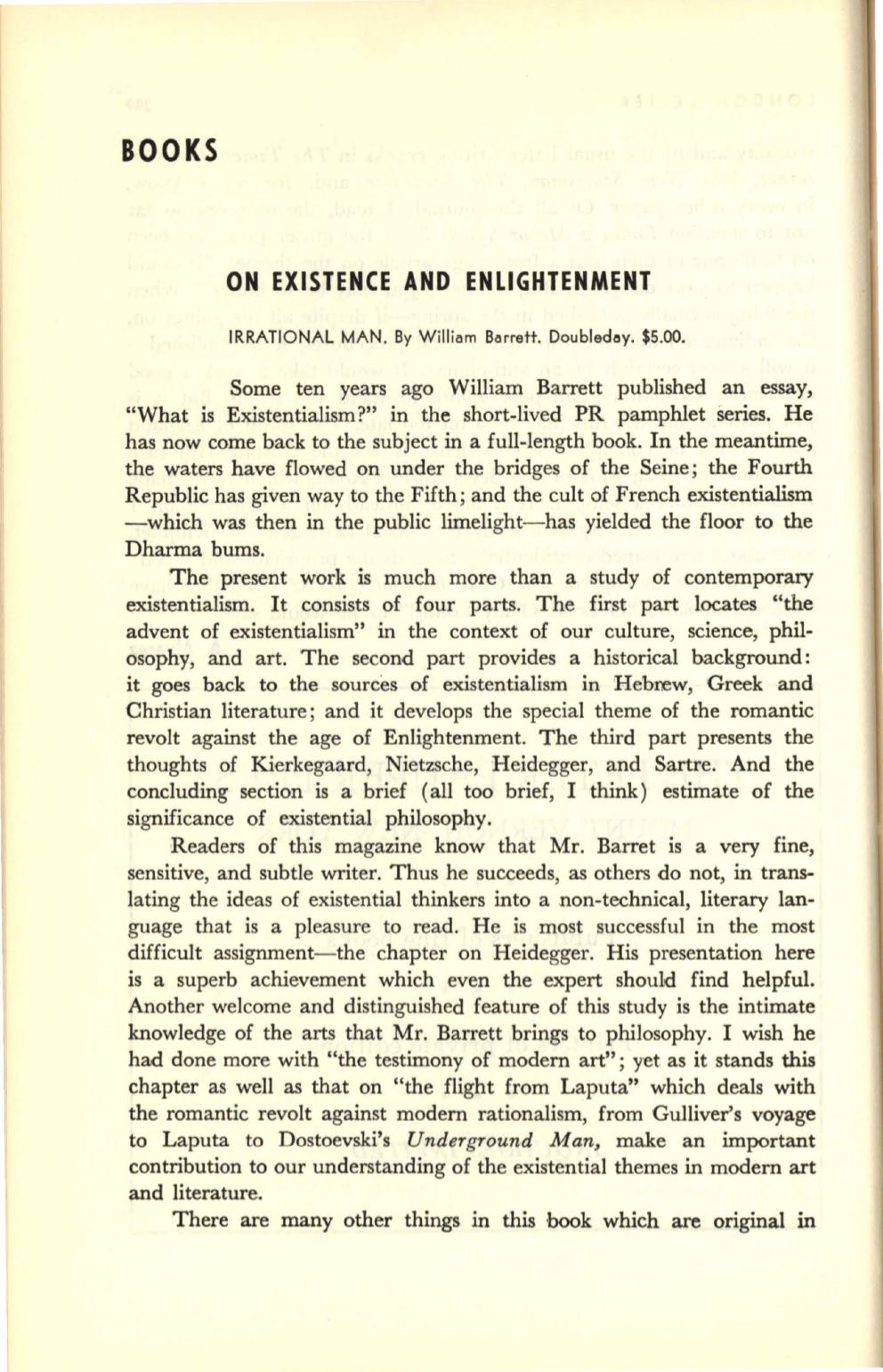
BOOKS
ON EXISTENCE AND ENLIGHTENMENT
IRRATIONAL MAN. By Williom Bllrrett. DoubledllY. $5.00.
Some ten years ago William Barrett published an essay,
"What is Existentialism?" in the short-lived PR pamphlet Series. He
has now come back to the subject in a full-length book. In the meantime,
the waters have flowed on under the bridges of the Seine; the Fourth
Republic has given way to the Fifth; and the cult of French existentialism
-which was then in the public limelight-has yielded the floor to the
Dharma bums.
The present work is much more than a study of contemporary
existentialism. It consists of four parts. The first part locates "the
advent of existentialism" in the context of our culture, science, phil–
osophy, and art. The second part provides a historical background:
it goes back to the sources of existentialism in Hebrew, Greek and
Christian literature; and it develops the special theme of the romantic
revolt against the age of Enlightenment. The third part presents the
thoughts of Kierkegaard, Nietzsche, Heidegger, and Sartre. And the
concluding section is a brief (all too brief, I think) estimate of the
significance of existential philosophy.
Readers of this magazine know that Mr. Barret is a very fine,
sensitive, and subtle writer. Thus he succeeds, as others do not, in trans–
lating the ideas of existential thinkers into a non-technical, literary lan–
guage that is a pleasure to read. He is most successful in the most
difficult assignment- the chapter on Heidegger. His presentation here
is a superb achievement which even the expert should find helpful.
Another welcome and distinguished feature of this study is the intimate
knowledge of the arts that Mr. Barrett brings to philosophy. I wish he
had done more with "the testimony of modern art"; yet as it stands
this
chapter as well as that on "the flight from Laputa" which deals with
the romantic revolt against modern rationalism, from Gulliver's voyage
to Laputa to Dostoevski's
Underground Man,
make an important
contribution to our understanding of the existential themes in modern
art
and literature.
There are many other things in this book which are original
in


